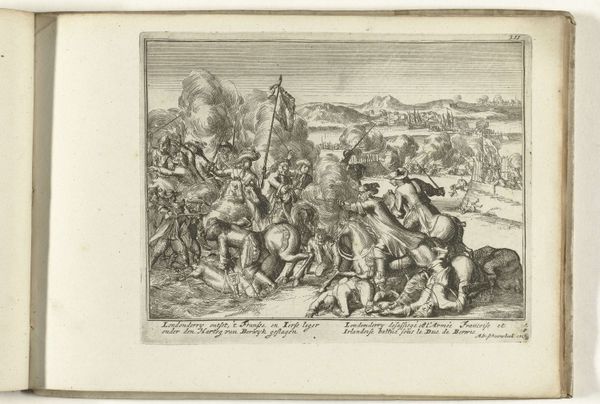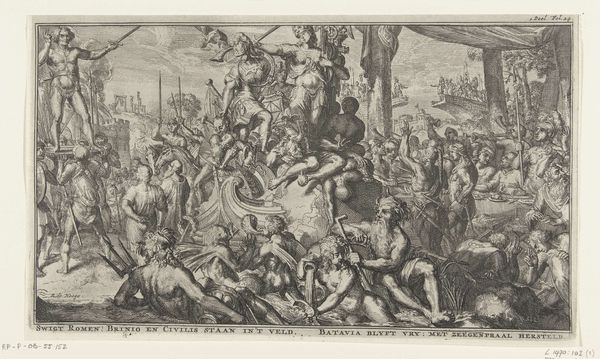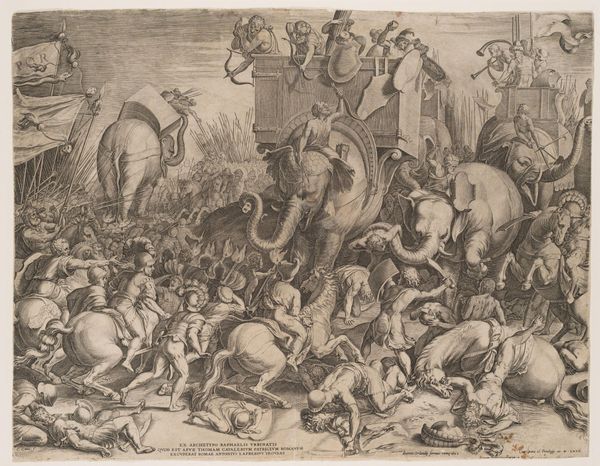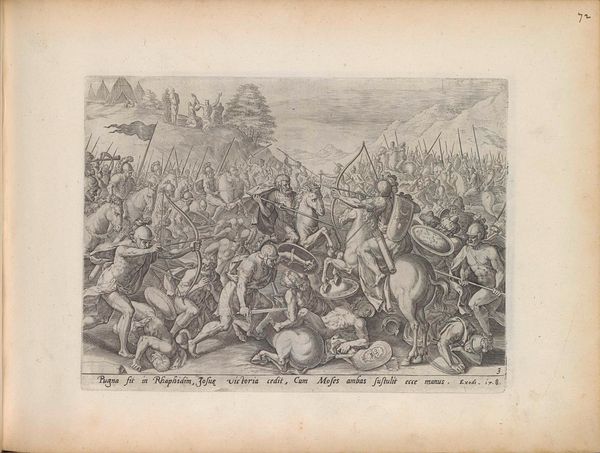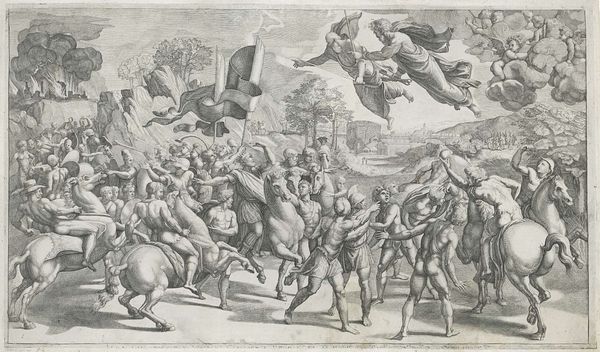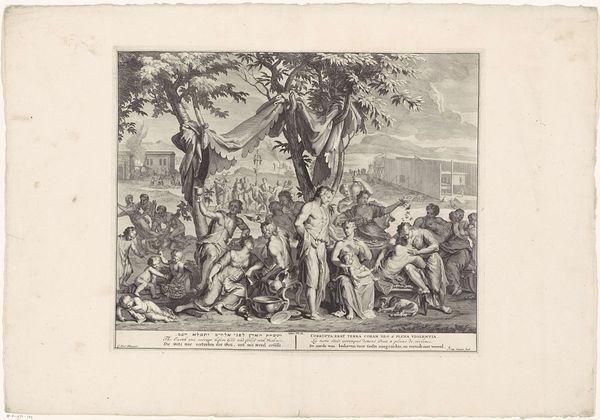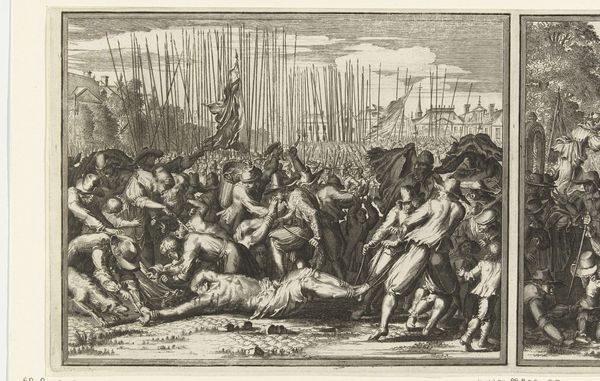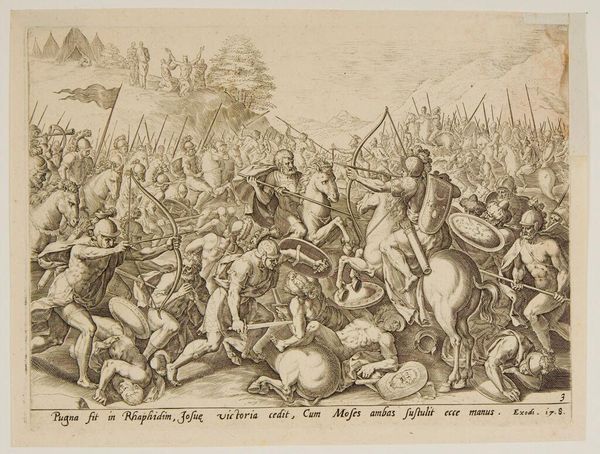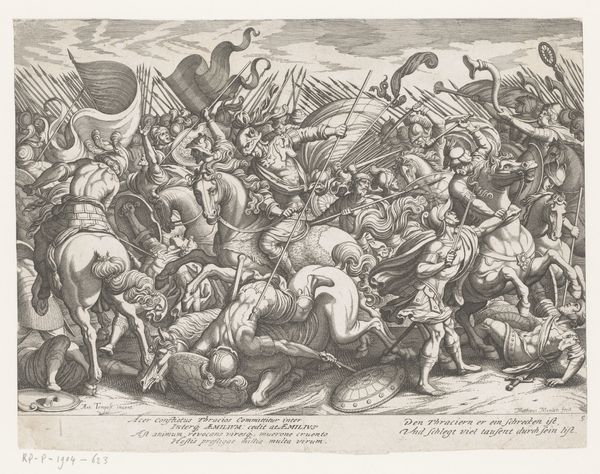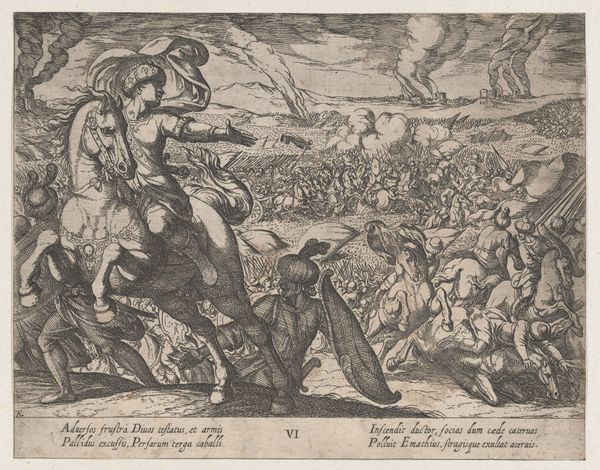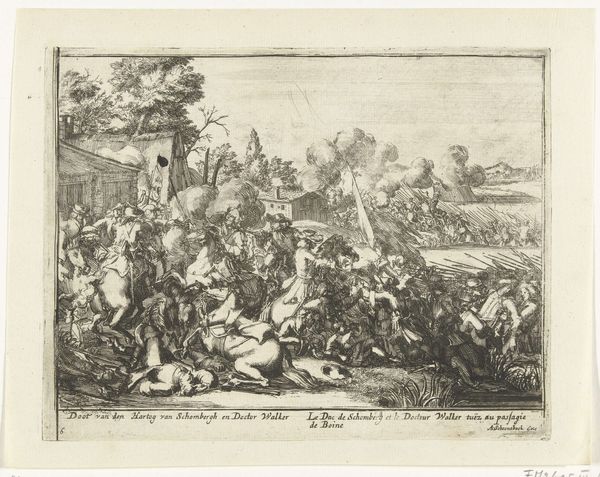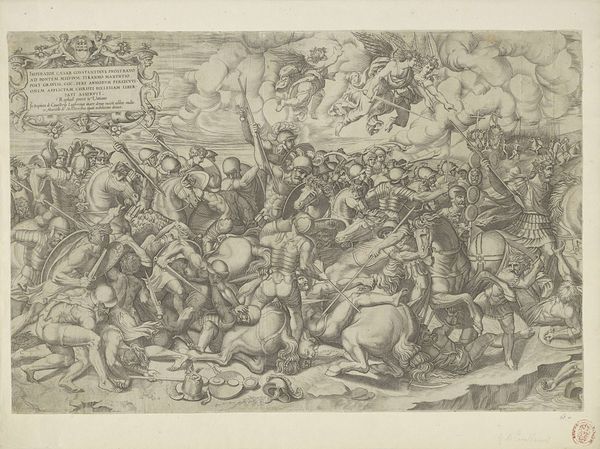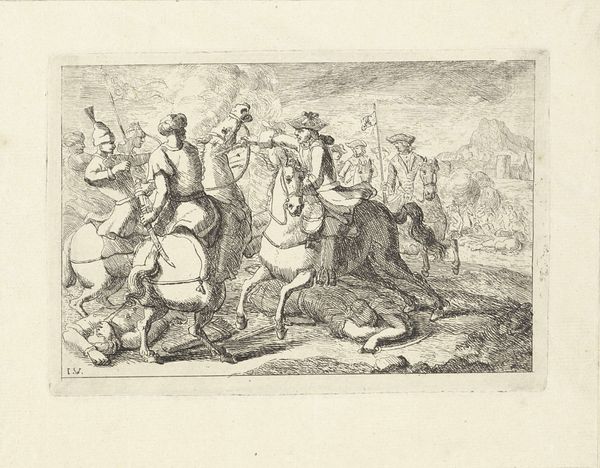
print, intaglio, engraving
#
allegory
#
narrative-art
#
baroque
# print
#
intaglio
#
figuration
#
line
#
history-painting
#
engraving
Dimensions: height 199 mm, width 286 mm
Copyright: Rijks Museum: Open Domain
Editor: Here we have Johann Sadeler I’s engraving, "Death of Uriah," sometime between 1579 and 1643. It depicts a chaotic battle scene, rendered with incredible detail, but also leaving me unsure where to look first. What do you see in this print? Curator: I am immediately drawn to the dynamism achieved through line. Observe how the dense network of engraved lines creates not only form, but also a powerful sense of movement and tension. Notice how Sadeler uses the density of the lines to suggest depth. Editor: The figures in the foreground, particularly the fallen Uriah, are much more defined. The lines seem almost frantic compared to the background. Is that intentional, you think? Curator: Precisely. Consider how the light reflects off the polished surfaces of armor and skin. This reflection would have required masterful engraving techniques to modulate the light. In essence, the artist masterfully uses light and shadow, as modulated through line, to create a strong sense of drama, both spatially and emotionally. Editor: It’s amazing how much depth he achieves with just lines. Did the linear style reflect some movement happening at that time? Curator: In part yes, since printmaking afforded more people access to complex imagery. Consider that engraving, unlike painting, requires an extreme degree of premeditation and control. Editor: This has been illuminating. It really has taught me to "read" prints like never before. Curator: And hopefully this newfound insight allows us both to consider engravings with the rigor afforded other artistic mediums.
Comments
No comments
Be the first to comment and join the conversation on the ultimate creative platform.
